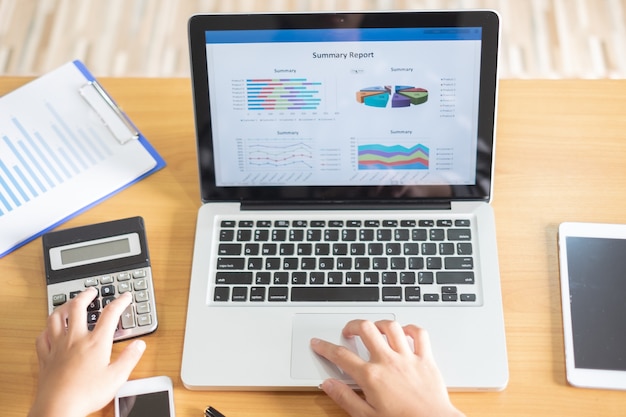Build a $10,000 Emergency Fund in 12 Months: Your Guide

Building a $10,000 emergency fund in 12 months is achievable through diligent budgeting, strategic savings, and exploring additional income streams, providing financial security and peace of mind.
Embarking on the journey to financial security often starts with a solid emergency fund. This guide will walk you through exactly how to build a $10,000 emergency fund in 12 months: a step-by-step personal guide tailored for those seeking financial stability and peace of mind.
Why You Need a $10,000 Emergency Fund
An emergency fund acts as a financial safety net, protecting you from unexpected expenses and financial shocks. Knowing why you need this fund can be a major motivator in staying consistent with your saving.
Unexpected Expenses
Life is full of surprises, and not all of them are pleasant. From car repairs to medical bills, unexpected expenses can quickly derail your financial plans. Having an emergency fund ensures that you can handle these situations without resorting to debt.
Job Loss Protection
Job security is never guaranteed. In the event of a job loss, an emergency fund can cover your living expenses while you search for new employment. This reduces the stress and financial strain of unemployment.
- Peace of Mind: Knowing you’re prepared for unforeseen events reduces stress and improves overall well-being.
- Avoid Debt: Prevents reliance on high-interest credit cards or loans during emergencies.
- Financial Stability: Helps maintain your financial stability during challenging times.
Building a $10,000 emergency fund is an essential step towards financial stability. It protects you from unexpected expenses, provides job loss protection, and improves your overall financial well-being.
Step 1: Assess Your Current Financial Situation
Before you start saving, it’s important to understand your current financial situation. This involves evaluating your income, expenses, and debts to identify areas where you can save and allocate resources to your emergency fund.
Calculate Your Income
Start by determining your monthly income. This includes your salary, wages, and any other sources of revenue. Having a clear picture of your income will help you set realistic savings goals.
Track Your Expenses
Next, track your expenses for a month. Use a budgeting app, spreadsheet, or notebook to record every dollar you spend. This will help you identify where your money is going and where you can cut back.

Assessing your financial situation is a critical first step in building your emergency fund. By calculating your income, tracking your expenses, and creating a budget, you’ll be better prepared to achieve your savings goals.
Step 2: Create a Realistic Budget
A budget is a roadmap for your money. It helps you allocate your income to various expenses and savings goals, ensuring that you have enough money to cover your needs while still saving for your emergency fund.
The 50/30/20 Rule
Consider the 50/30/20 rule as a starting point for your budget. This rule allocates 50% of your income to needs, 30% to wants, and 20% to savings and debt repayment.
Identify Areas to Cut Expenses
Look for areas where you can cut back on spending. This might include dining out, entertainment, or subscription services. Even small reductions in spending can add up over time. Reduce your spending by at least 15%, so that you have money that can go for your saving goals.
- Needs: Essentials like housing, food, transportation, and utilities.
- Wants: Non-essential items such as dining out, entertainment, and hobbies.
- Savings: Contributions to your emergency fund, retirement accounts, and other savings goals.
Creating a realistic budget is essential for building your emergency fund. By understanding the 50/30/20 rule and identifying areas to cut expenses, you can allocate more resources to your savings goals.
Step 3: Automate Your Savings
Automation is a powerful tool for building your emergency fund. By setting up automatic transfers from your checking account to your savings account, you can ensure that you consistently save money without having to think about it.
Set Up Automatic Transfers
Schedule regular transfers from your checking account to your emergency fund account. Even small, consistent transfers can add up over time. Aim to save at least $833 per month to reach your $10,000 goal in 12 months.
Use Direct Deposit
If possible, set up direct deposit so that a portion of your paycheck automatically goes into your emergency fund account. This makes saving even easier and more convenient.
Automating your savings is a highly effective way to build your emergency fund. Setting up automatic transfers and using direct deposit ensures that you consistently save money without relying on willpower alone.
Step 4: Increase Your Income
If you’re struggling to save enough money, consider increasing your income. There are many ways to earn extra money, from freelancing to starting a side hustle. These extra income streams can significantly accelerate your savings progress.
Freelancing and Side Hustles
Explore freelancing opportunities or start a side hustle in your spare time. Freelance writing, graphic design, and virtual assistant services are just a few options to consider.
Sell Unused Items
Declutter your home and sell items you no longer need. Online marketplaces like eBay and Facebook Marketplace make it easy to sell your unwanted belongings for extra cash.

- Freelance Writing: Offer your writing skills to businesses and individuals.
- Virtual Assistant: Provide administrative, technical, or creative assistance to clients from a remote location.
- Online Tutoring: Share your knowledge and expertise by tutoring students online.
Increasing your income is a great way to accelerate your emergency fund savings. By exploring freelancing opportunities, selling unused items, and leveraging your skills, you can boost your income and reach your $10,000 goal faster.
Step 5: Stay Motivated and Track Your Progress
Building an emergency fund can be a long and challenging process. It’s important to stay motivated and track your progress to see how far you’ve come. Celebrate small milestones along the way to keep yourself motivated.
Set Achievable Goals
Break down your $10,000 goal into smaller, more manageable milestones. For example, aim to save $833 per month or $208 per week. Achieving these smaller goals will keep you motivated and on track.
Reward Yourself
Celebrate your successes along the way. Treat yourself to something small when you reach a savings milestone. Just make sure your rewards don’t derail your overall savings plan.
Staying motivated and tracking your progress are crucial for building your emergency fund. By setting achievable goals and rewarding yourself along the way, you can stay focused and committed to reaching your financial goals.
Step 6: Choose the Right Savings Account
Selecting the right savings account is crucial for maximizing your emergency fund’s growth and accessibility. Consider high-yield savings accounts and money market accounts to make your money work harder.
High-Yield Savings Accounts
These accounts offer higher interest rates than traditional savings accounts, allowing your emergency fund to grow faster. Look for accounts with competitive rates and minimal fees.
Money Market Accounts
Money market accounts typically offer higher interest rates than standard savings accounts and may come with check-writing privileges, providing easy access to your funds when needed.
Choosing the right savings account is essential for maximizing the growth and accessibility of your emergency fund. High-yield savings accounts and money market accounts can help your money work harder, ensuring it’s there when you need it.
| Key Point | Brief Description |
|---|---|
| 💰 Assess Finances | Evaluate income, expenses, and debt for saving opportunities. |
| 💸 Create Budget | Use the 50/30/20 rule and cut unnecessary expenses. |
| 🏦 Automate Savings | Set up automatic transfers to your emergency fund. |
| 🚀 Increase Income | Explore freelancing, side hustles, and selling unused items. |
Frequently Asked Questions
An emergency fund provides a financial safety net for unexpected expenses like medical bills, car repairs, or job loss. It helps you avoid debt and maintain financial stability during challenging times.
To reach a $10,000 emergency fund in 12 months, aim to save at least $833 per month. Adjust the amount based on your income and expenses, but stay consistent with your savings efforts.
High-yield savings accounts and money market accounts are ideal for emergency funds. They offer higher interest rates, allowing your money to grow faster while still being easily accessible when needed.
Set achievable goals, track your progress, and reward yourself for reaching milestones. Automating your savings and finding ways to increase your income can also help you stay motivated and on track.
If you use your emergency fund, focus on replenishing it as soon as possible. Adjust your budget to allocate more funds to savings and consider increasing your income through side hustles to rebuild your fund.
Conclusion
Building a $10,000 emergency fund in 12 months is an ambitious but achievable goal. By following a step-by-step plan, staying committed, and making smart financial decisions, you can secure your financial future and gain peace of mind.





